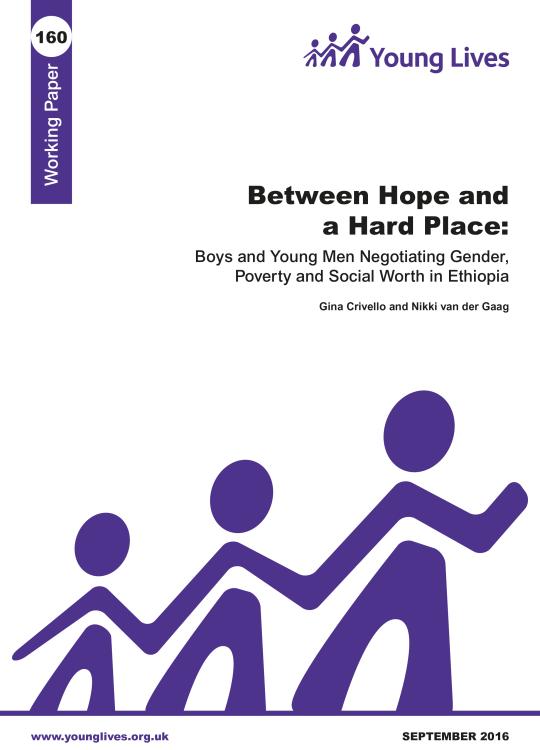
Breadcrumb
Between Hope and a Hard Place: Boys and Young Men Negotiating Gender, Poverty and Social Worth in Ethiopia
In recent years, there has been an increasing focus on adolescence as a key transition to adulthood. Young people are navigating puberty and making life choices around schooling, work, and intimate and family relationships. However, much of the attention has been on girls. This has led to a lack of gendered analysis and has also meant that adolescent boys have been largely left out of the picture.
This paper uses Young Lives research in Ethiopia, carried out over multiple years, to look at boys and young men’s lives, their aspirations, and the obstacles they face as they grow into adults. It examines the diverse strategies they employ to overcome these challenges, and compares their experiences with those of girls and young women of the same age.
Education is seen by both parents and children as a route out of poverty. 95 per cent of Young Lives boys and girls were enrolled in school at the age of 12. By age 19, there was a growing ambivalence regarding education, particularly for young men who increasingly oriented their aspirations towards the world of work. Rural/urban contrasts Young people growing up in rural areas are often seen as having fewer life chances than those in towns. But the least optimistic young men were located in urban areas where they felt disconnected from development opportunities. Livelihoods Many of the young men had left school and were trying to find work, both as a response to poverty and a vital source of respect in the community. But because they found so few opportunities for gainful employment, some of them were left feeling stuck and hopeless. Marriage Girls see marriage as one way of improving their lives. But for young men, marriage was impossible until they had adequately paid work, and was therefore a way of entering into adulthood that they could not imagine in the near future.
The paper concludes by drawing out the policy implications of our findings. It calls for stronger gendered evidence on the relationship between gender inequality and childhood poverty, and an approach to gender justice that include boys and young men, as well as girls and young women, so that none are left trapped between hope and a hard place.

